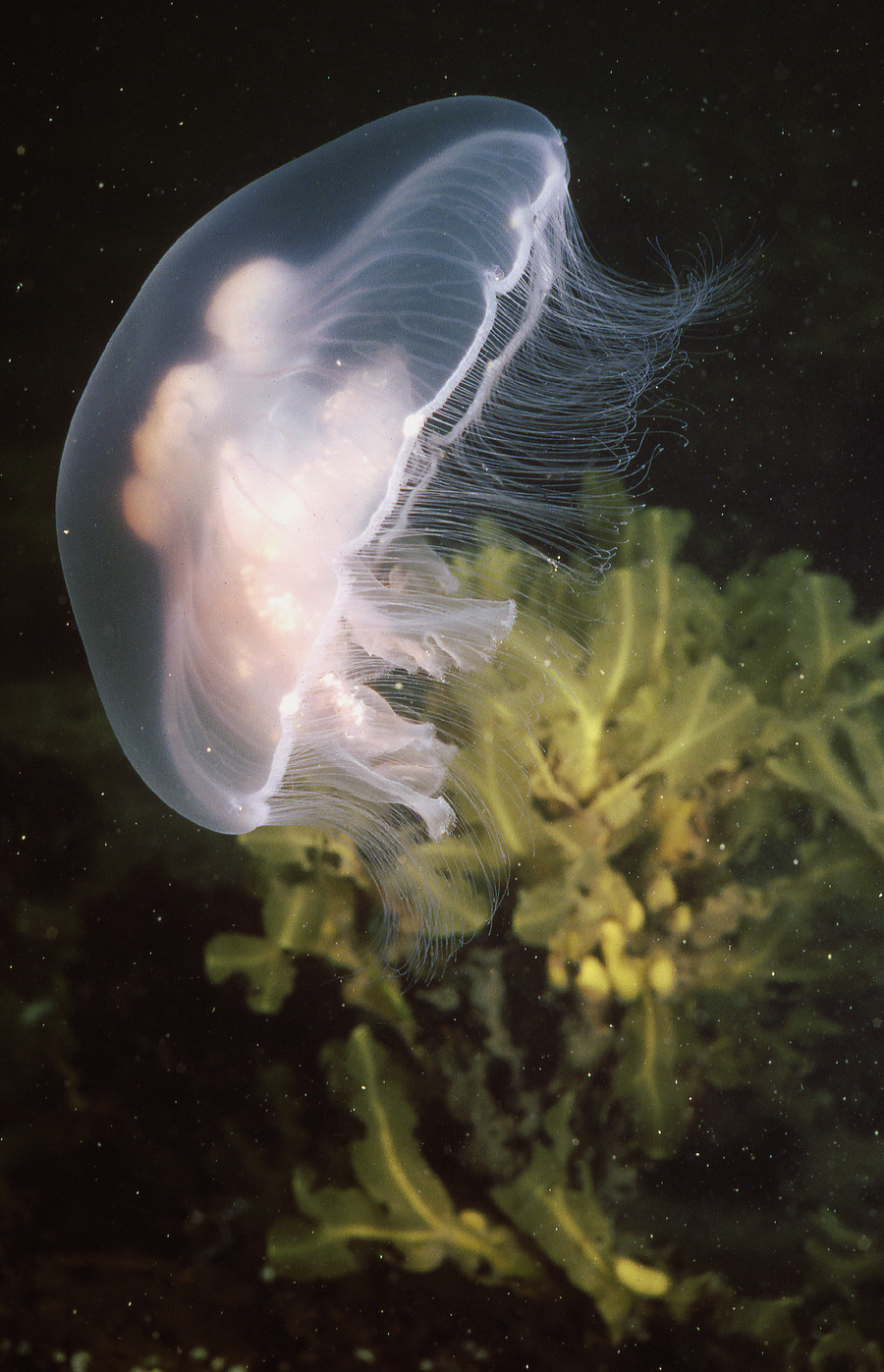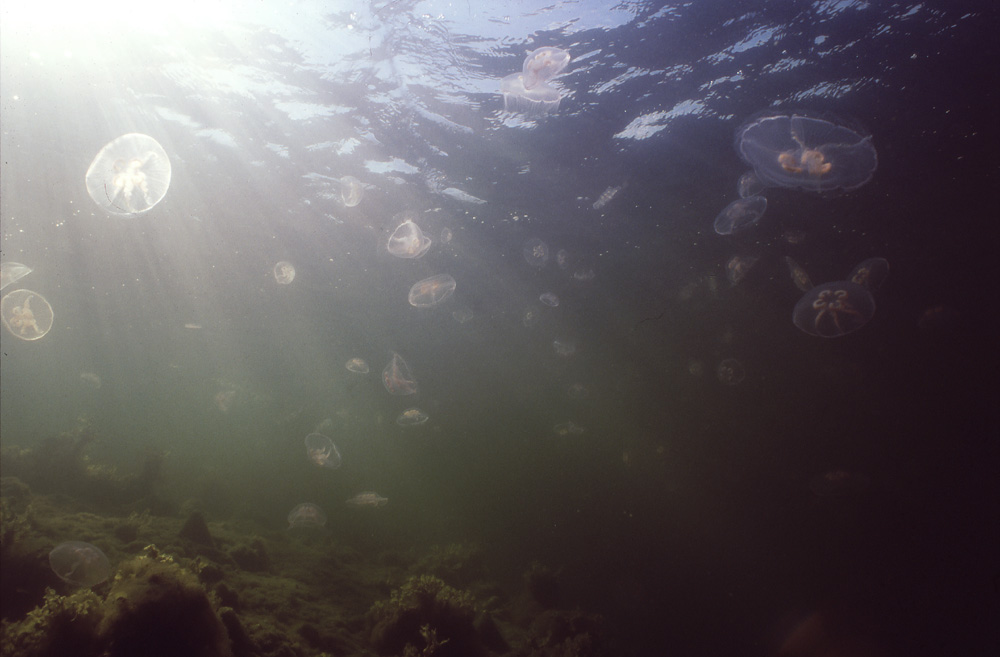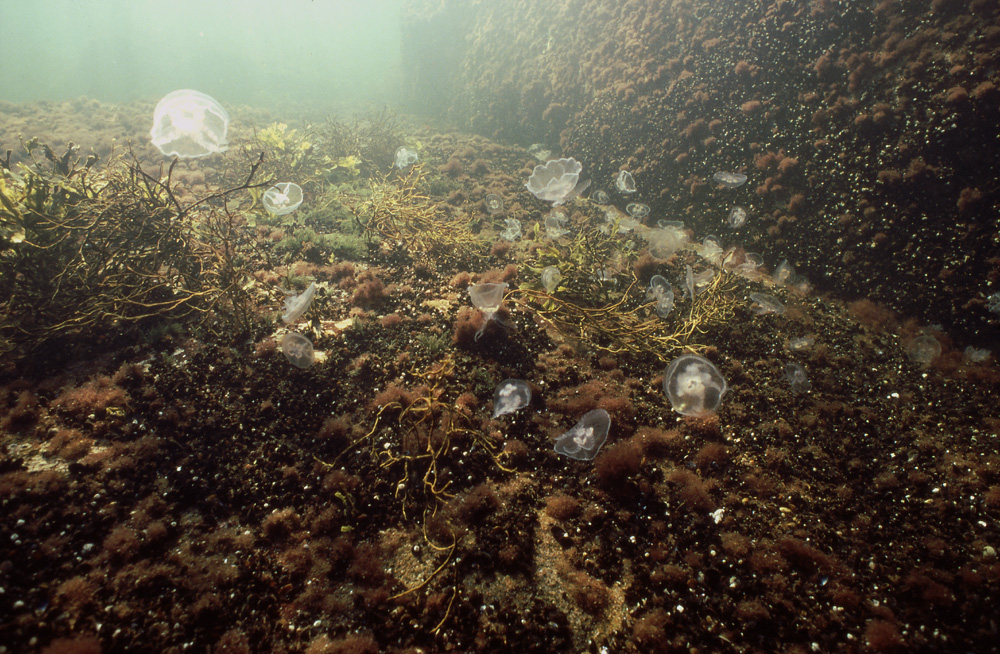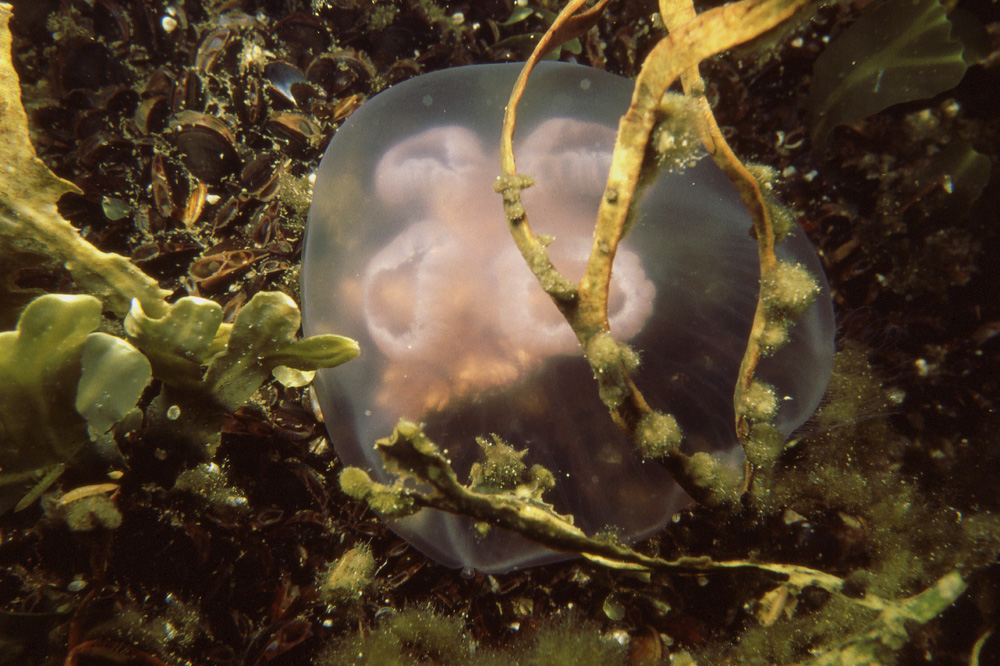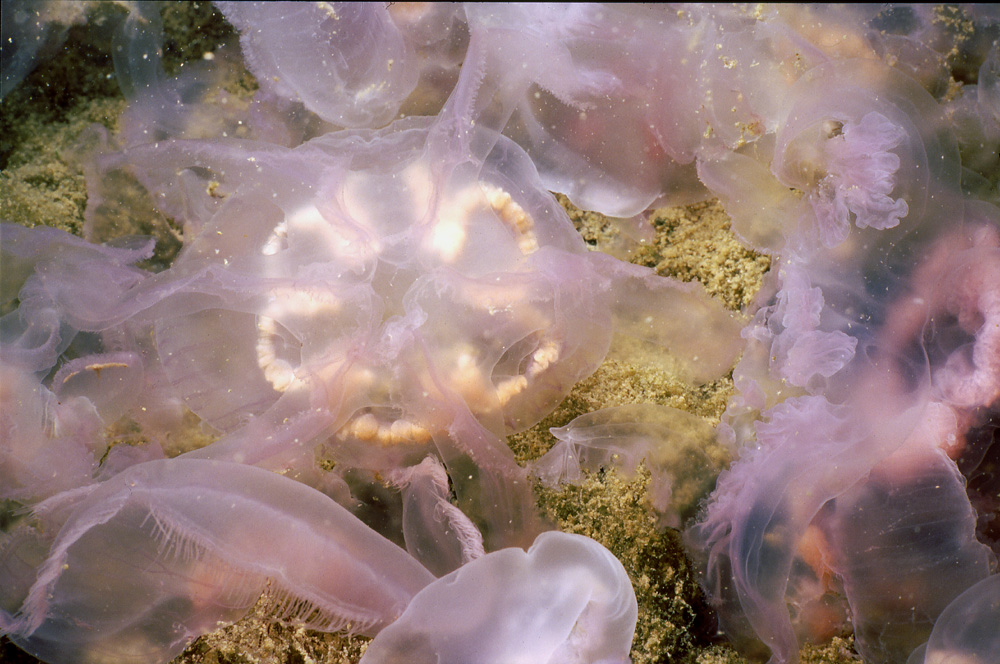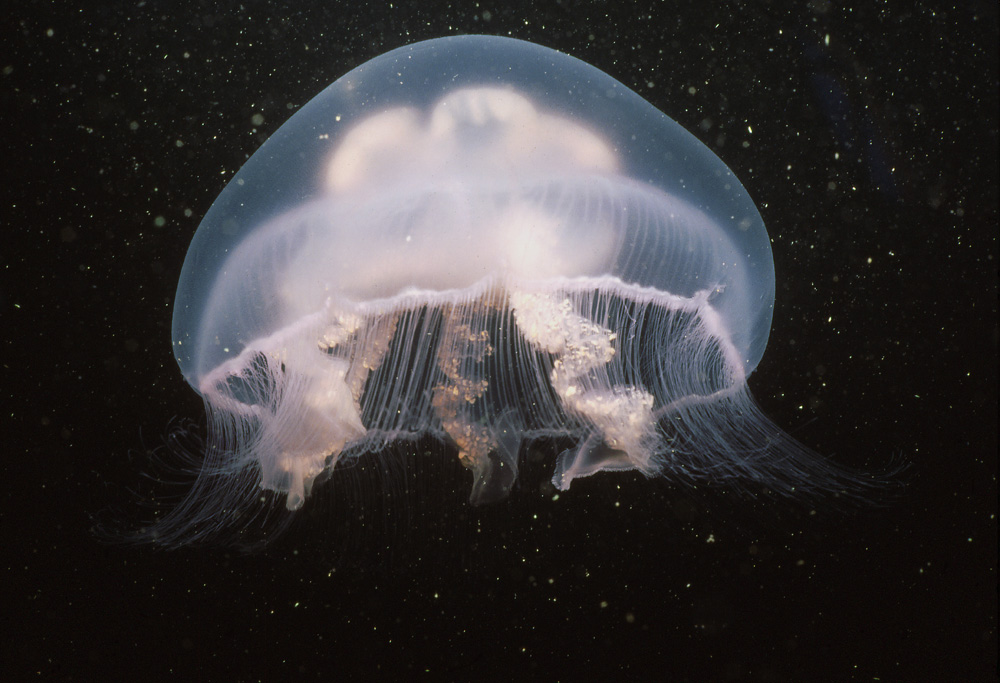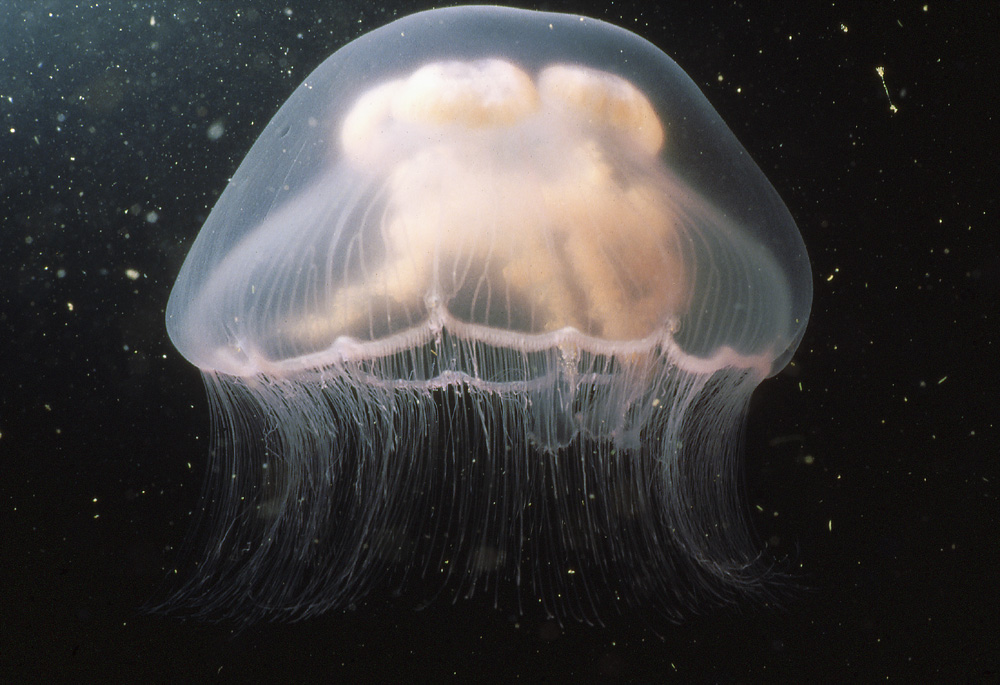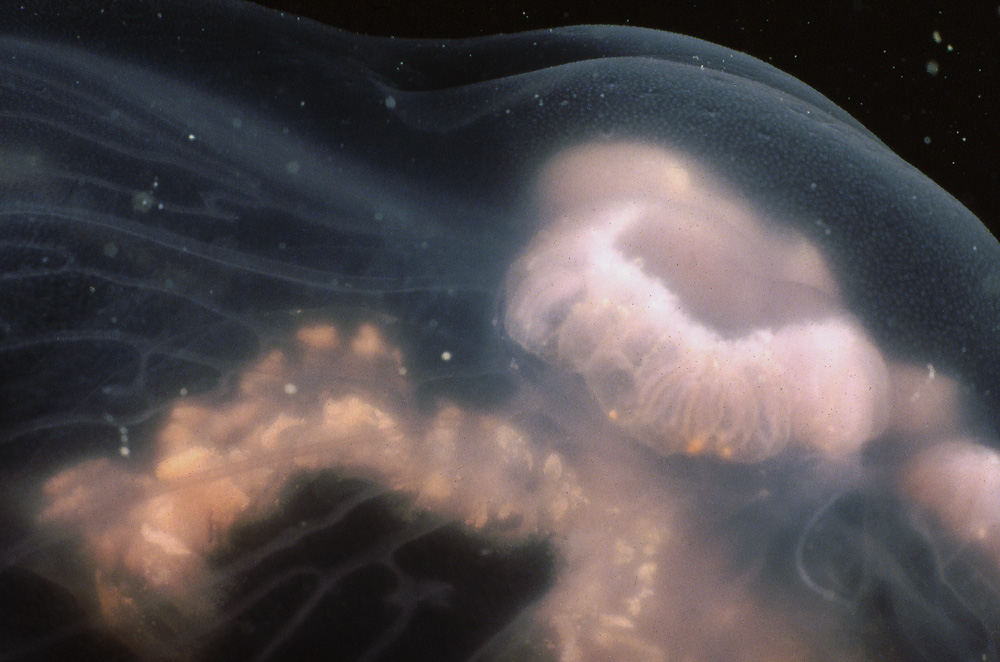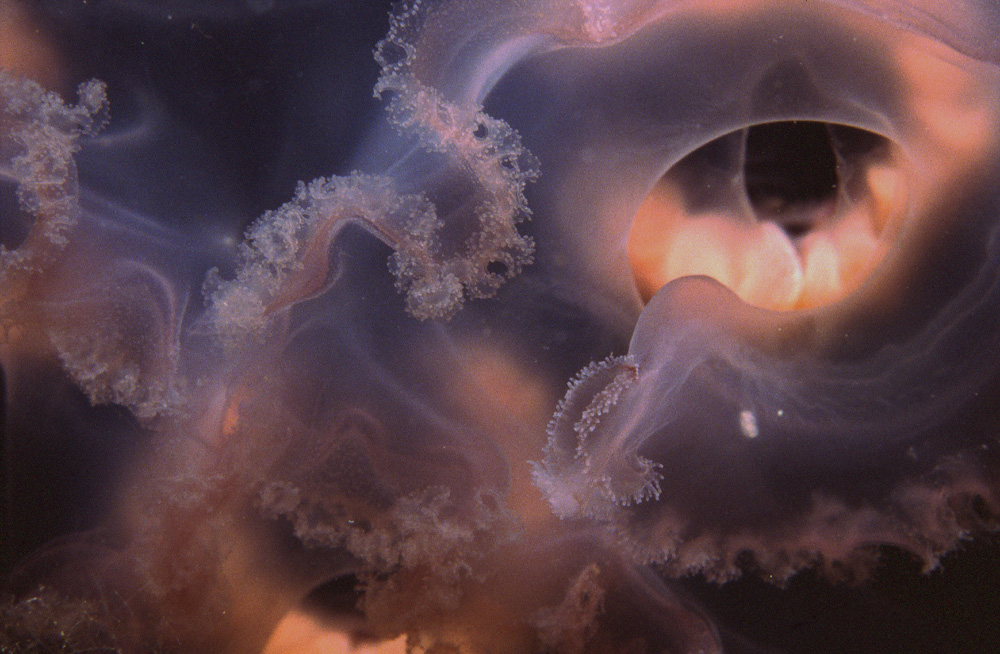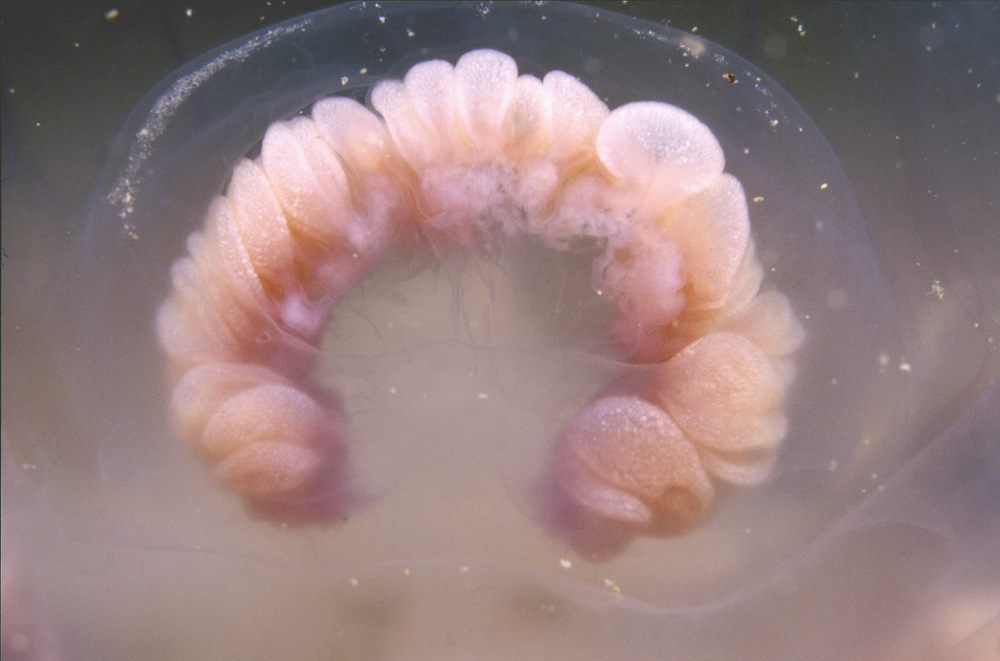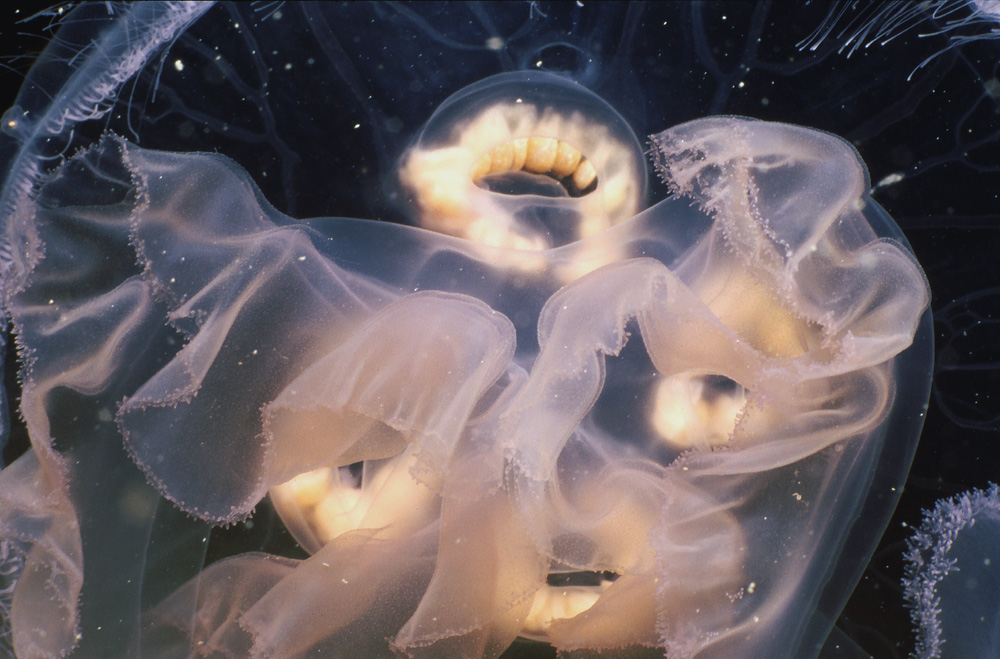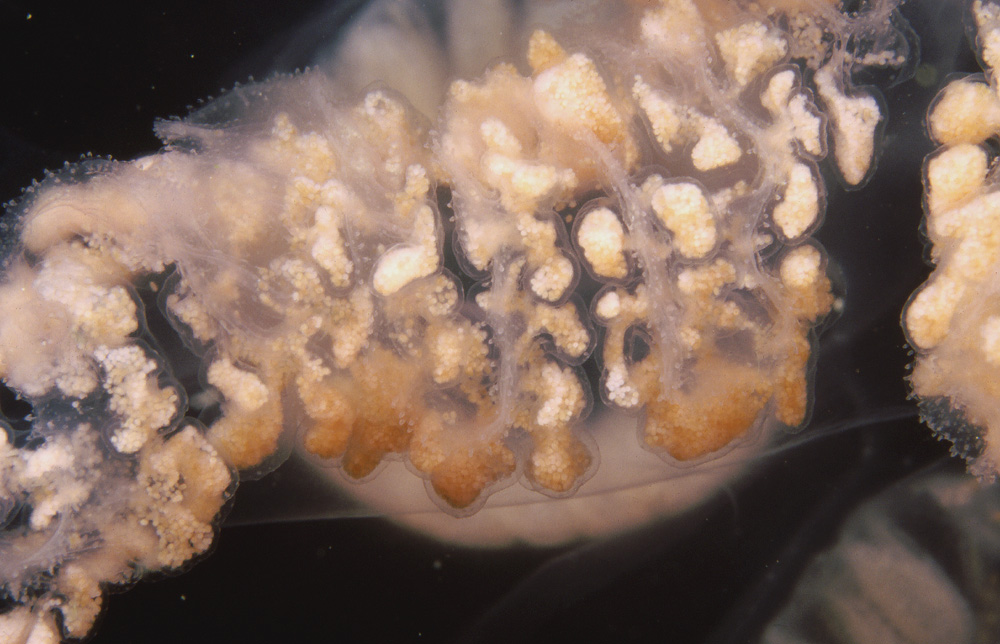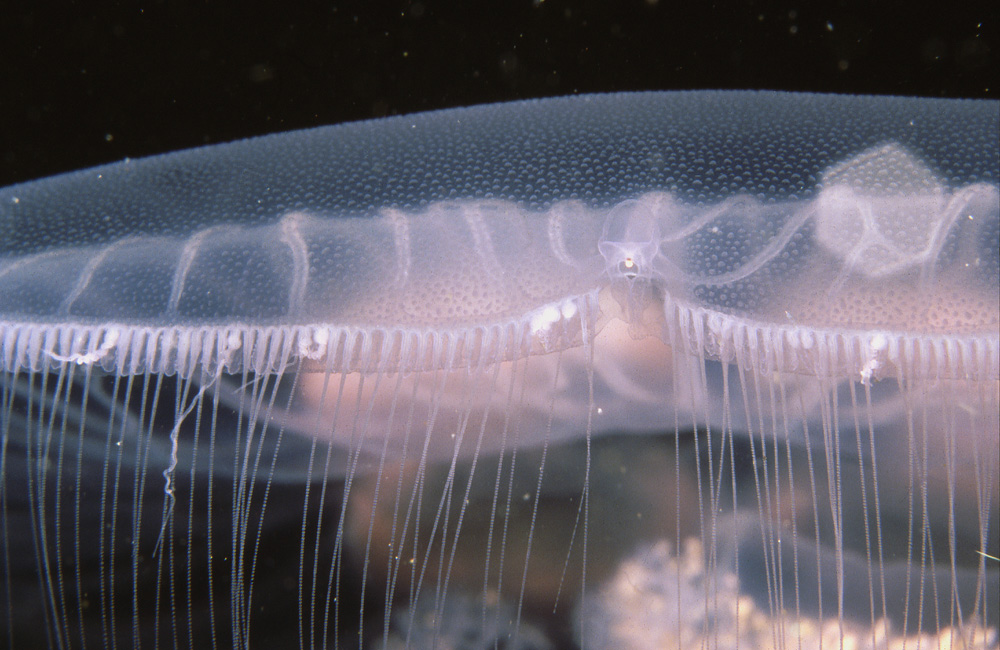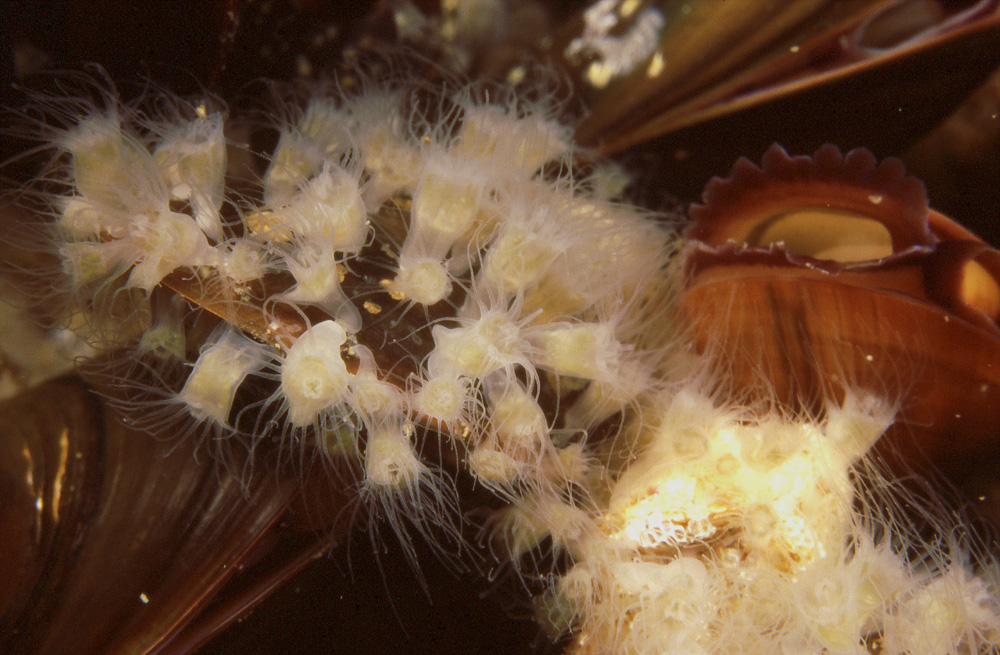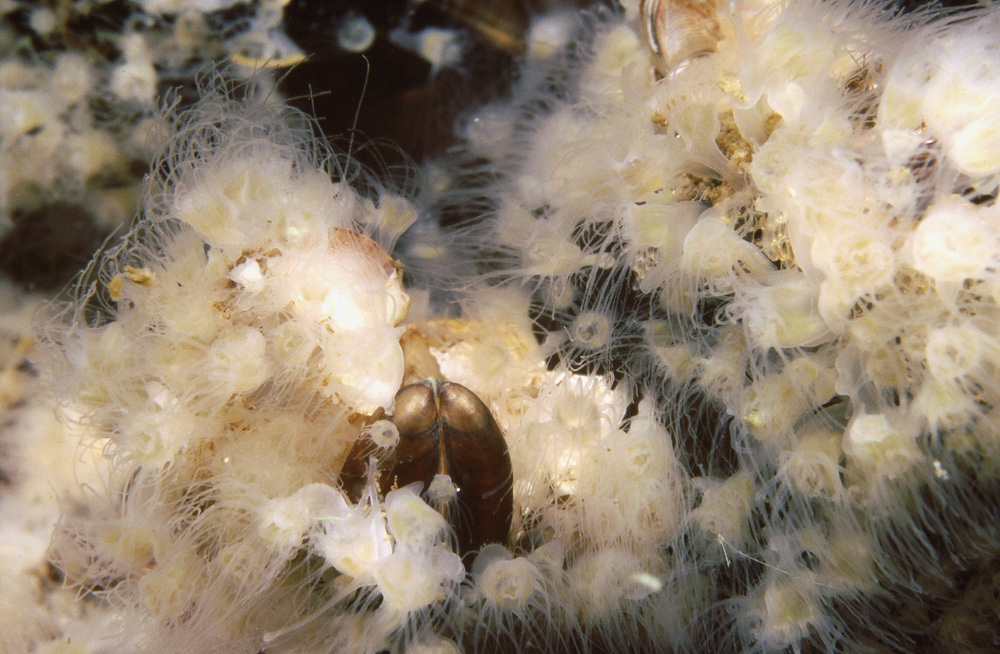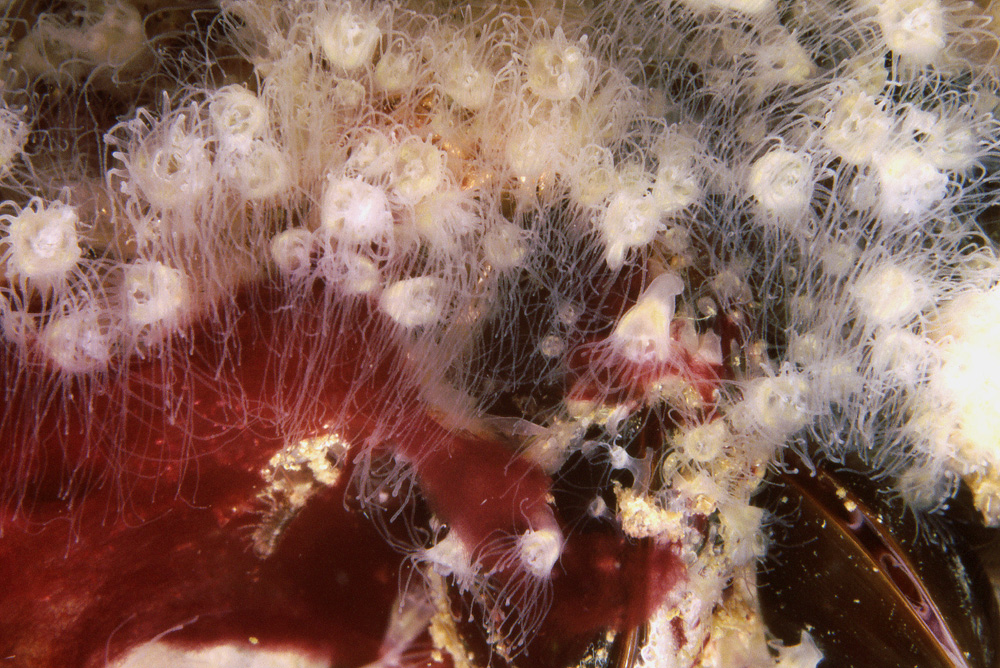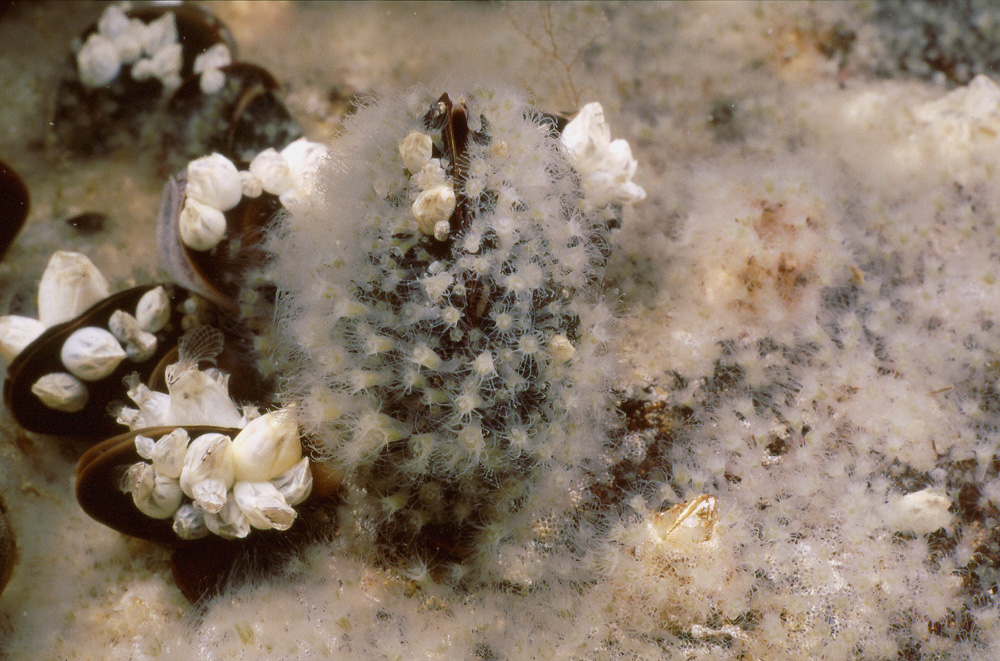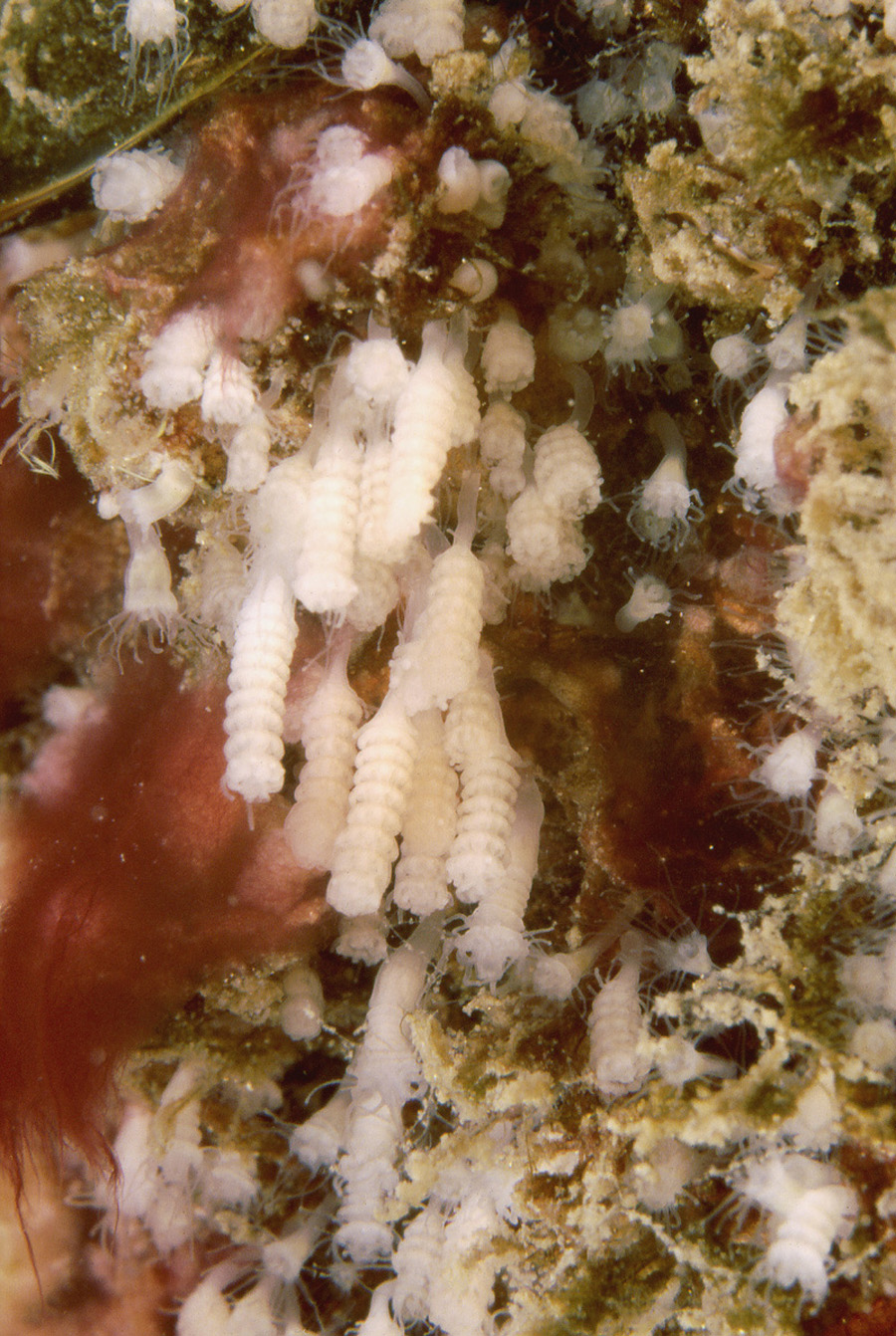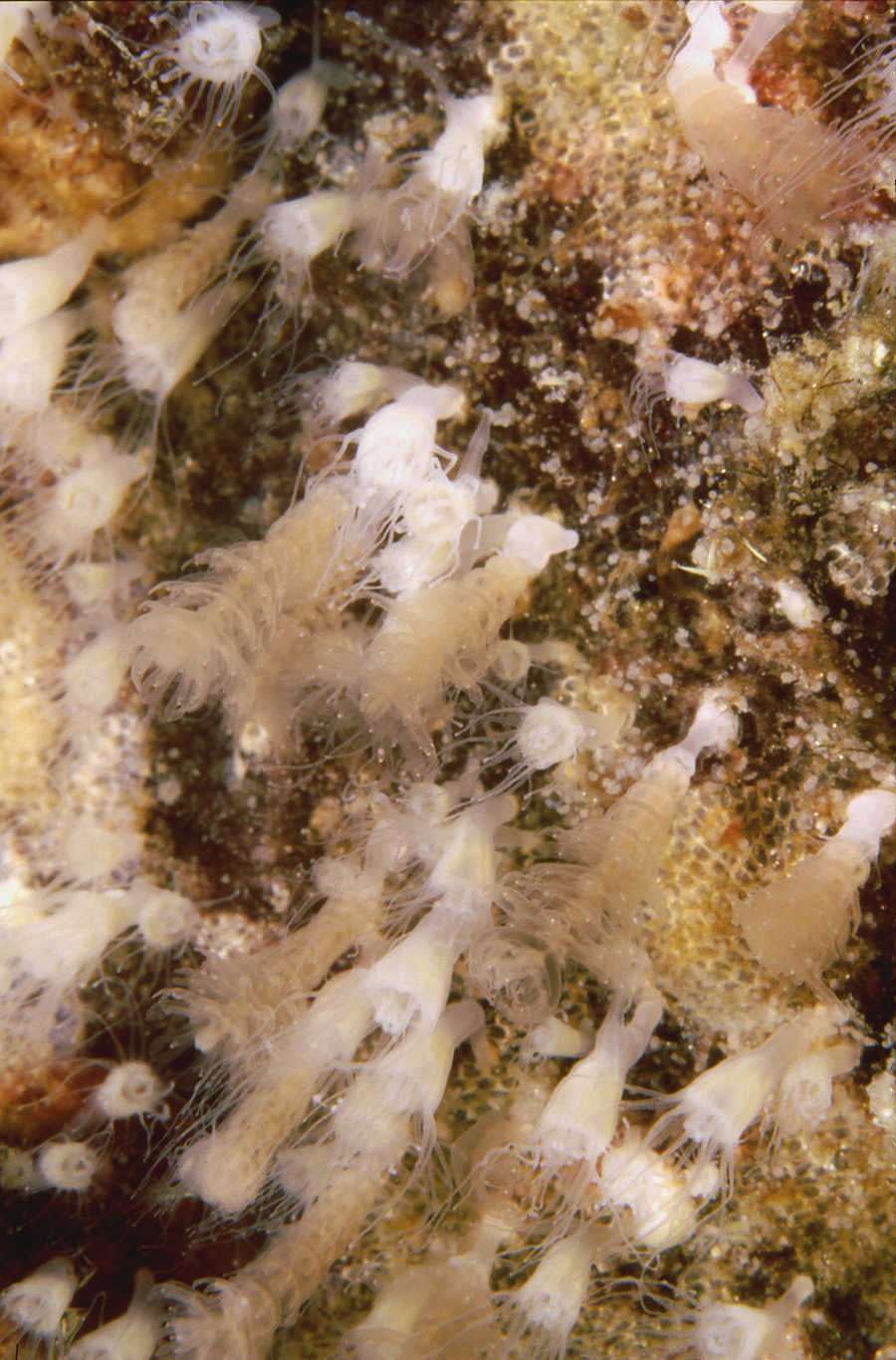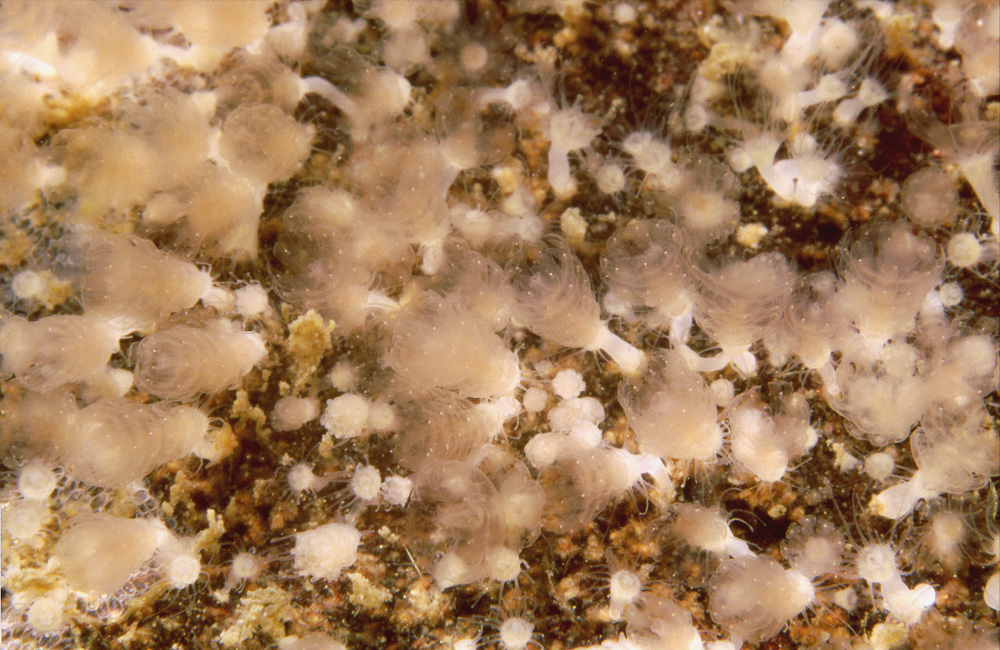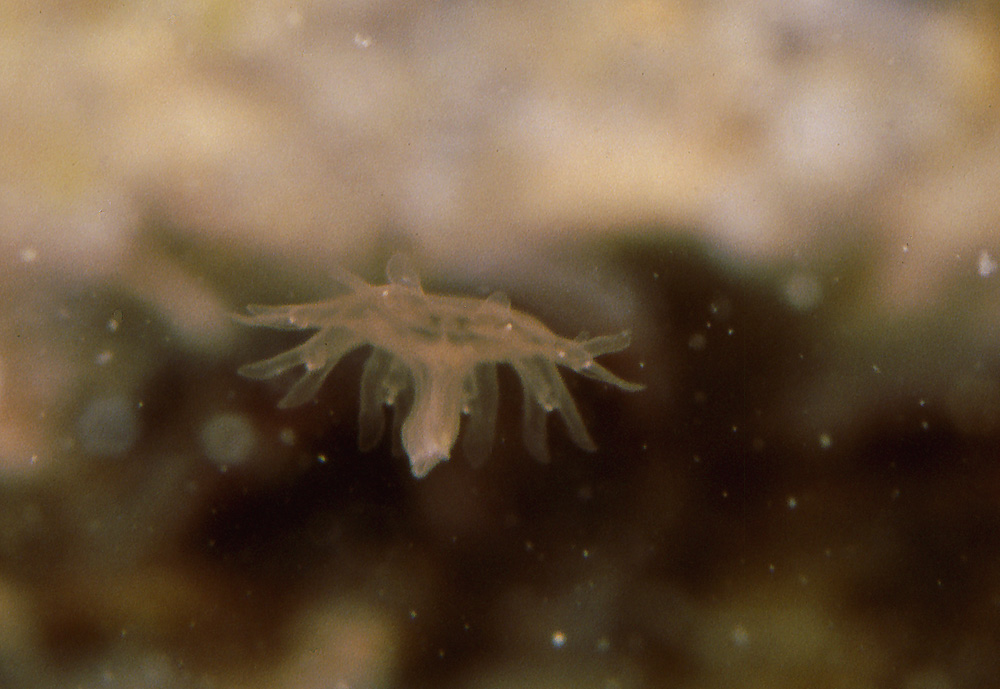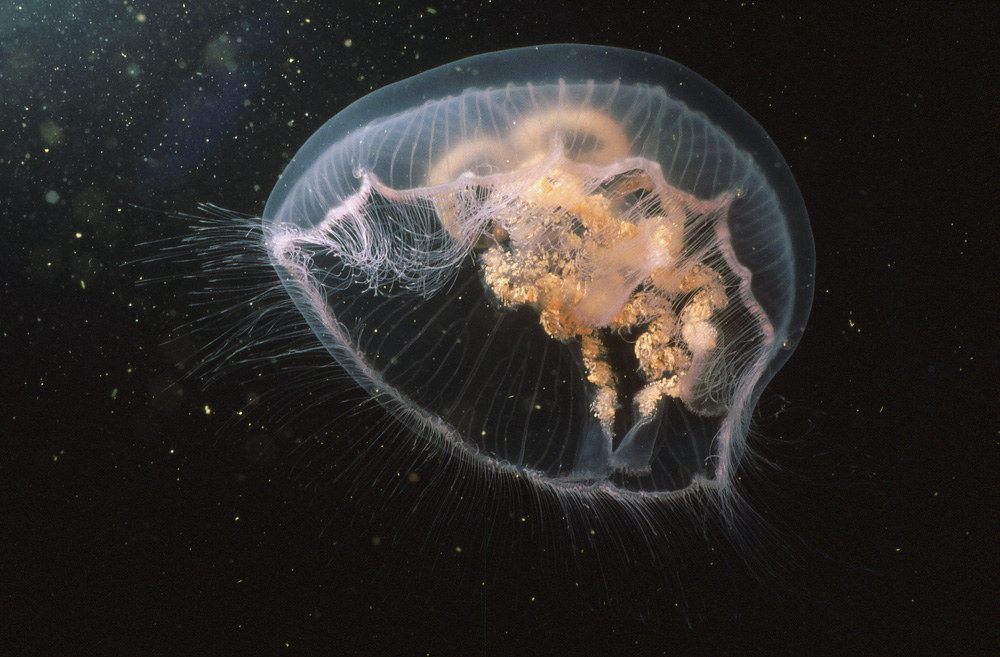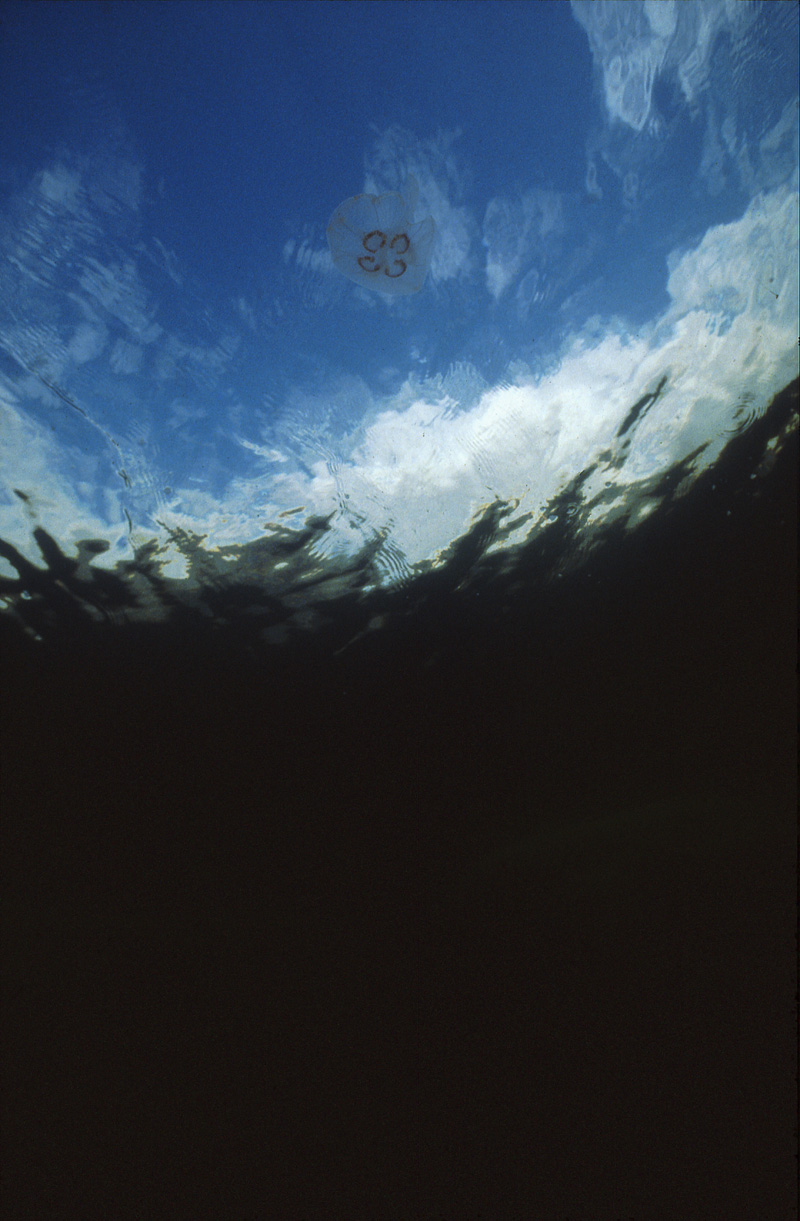10. A MESSENGER FROM FAR-AWAY SEAS
Floating in water and slowly pulsating its swimming bell the medusa of the common jellyfish (Aurelia aurita) could be regarded as the underwater counterpart of a butterfly. In Greek mythology the flight of a butterfly is connected to the concept of a soul, or soulfulness. In the Greek language psykhe means both the soul and butterfly, to make the connection even clearer.
Perhaps it was, originally, the metamorphosis of the butterfly, from larva to the flying stage that made the Greeks think of the butterfly as a symbol of the soul: a human would also have to through a transformation, suffering from the pain and the struggle, in order to enjoy the goodness in life and experience the lightness of being. But, even biologically, the analogy of the jellyfish and butterfly is not as farfetched as it might seem: the jellyfish, too, has the transformation, from the polyp stage to a medusa, from a bottom-dwelling sessile to a freely floating plankter.
The hydrozoans, in general, have polyp and medusa stages but which one of the stages is more visible varies from species to species. The medusa stage of the common jellyfish is by far the dominating one, the polyps being only millimeters in size. The size of the aurelia medusa varies according to the salinity of the water it lives in: floating in saltier water requires less energy and the medusa can grow in size instead.
Aurelia aurita is truly a cosmopolitan species, but it has been subject to some discussion whether it reproduces at all in the northern Baltic proper. From limited personal observations it seems clear that it does, but the so-called strobilation, or forming of premedusal discs, is locally very limited. Strobilation could only occur within one square meter on a rock wall of tens of square meters.
In the life cycle of the common jellyfish the polyp stage can produce both medusae or more polyps through a process of shedding. Polyps, as well as the medusae, are either males of females but the medusae only have sexual reproduction, producing larvae, which become polyps.
Even though the life cycle of the common jellyfish does not seem to be complete in the waters of the northern Baltic proper, medusae do turn up in great numbers in some years. Whatever you think of it as a symbol, its appearance is a reminder of the connection the Baltic has with the rest of the seas of the world.
The medusae of the common jellyfish of the northern Baltic do not grow to a size as large as their cousins in the more saline waters. Not further away than in some areas in the southern Baltic proper they can be so abundant as to take up all of the smaller planktic animals they use for feeding for a period of time. The occurrence of the medusae varies from year to year, but even in the irregular currents of the Baltic the medusae tend to concentrate in same coastal areas. The medusa lives only from around midsummer to autumn, at the most.
The medusae cannot swim against currents or in any specific direction at will. They do have a pattern of swimming, though: by swimming in a continuous vertical circle they control their average swimming depth, generally staying deeper at night and shallower during the day. What comes to mind is that they follow the planktic animals they feed on.
The oral arms have a double role in feeding and reproduction. Small grooves in the arms carry food, having been transferred from the rim of the swimming bell, into the mouth. The female uses the margins of the arms for storing the eggs for fertilization and while they are developing.
|
Lisää pääkuvan päälle tekstiä klikkaamalla ratas-ikonia,
joka ilmestyy tuodessasi hiiren tämän tekstin päälle.

